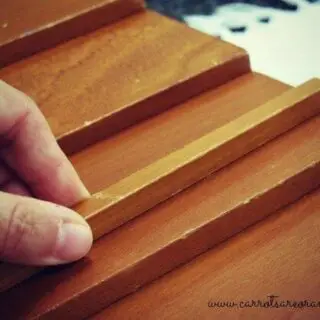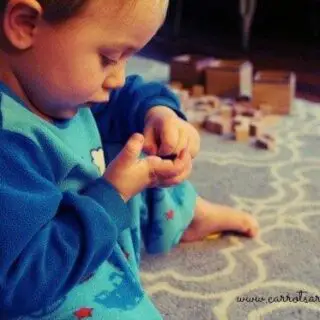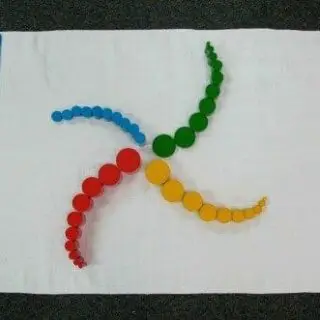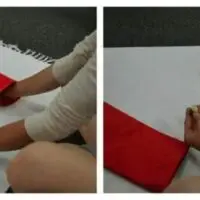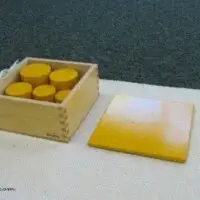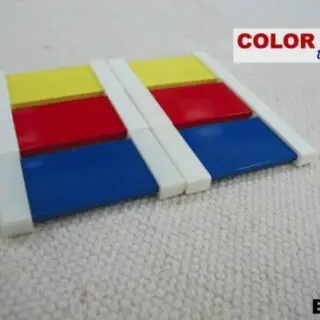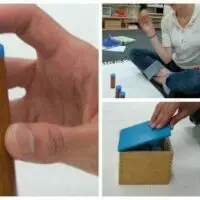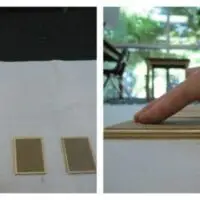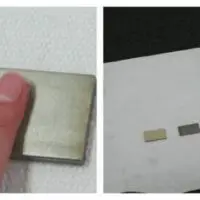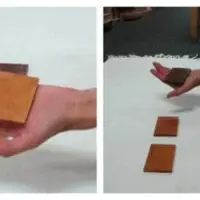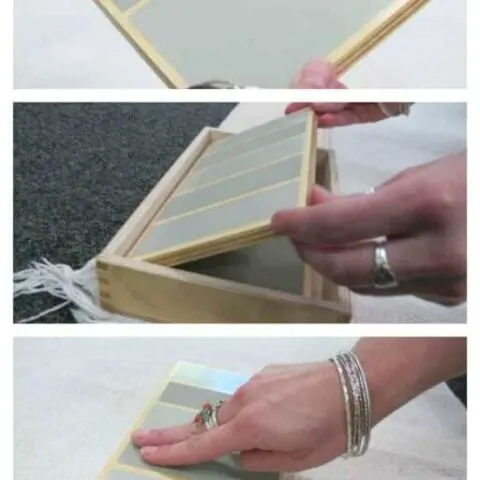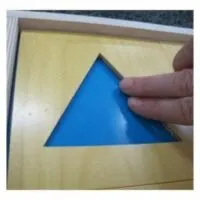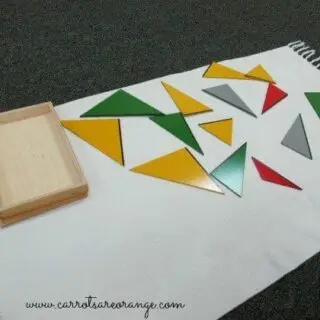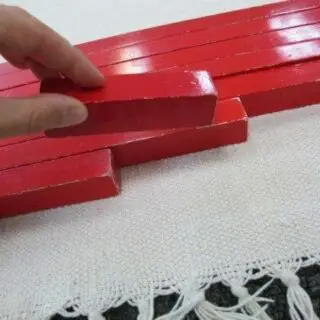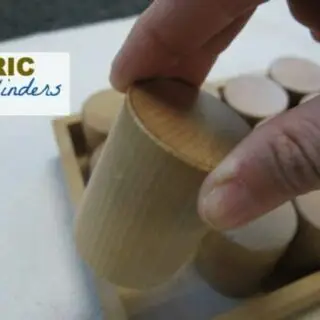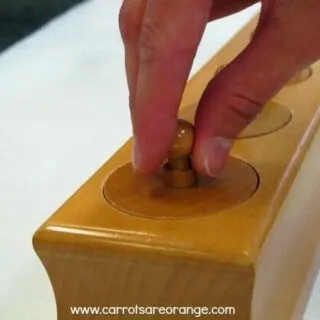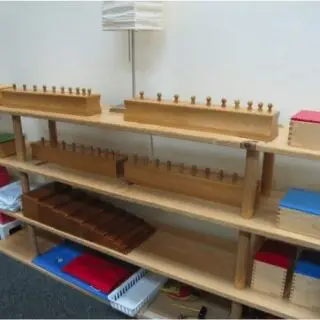I earn commissions from my affiliated links. Please see my disclosure policy for more details.
Learn the authentic AMS Montessori sensorial lesson sequence in this post. Sensorial is one of five general curriculum areas within Montessori.
The way it made the most sense to me during my training was to think of sensorial as one way the child (aka “the Young Explorer”) is trying to make sense of and study his environment (akin to language and the alphabet).
By using his senses, he classifies and creates order in his understanding, learning, and place in the world. The main goal is this sense of order through isolating specific concepts so that the child may acquire clear information and make sense of this information within his environment.

“It is necessary to begin the education of the senses in the formative period if we wish to perfect this sense development with the education which is to follow. The education of the senses should be begun methodically in infancy, and should continue during the entire period of instruction which is to prepare the individual for life in society.” ~ Dr. Montessori
What is Sensorial?
Maria Montessori believed that educating the senses preceded intellectual development. A child’s education begins at birth as he takes impressions of his world through his senses.
Around 2.5 years old he enters a sensitive period for organizing these impressions. Much like the alphabet organizes language, the sensorial work organizes impressions.
First: Organization of Impressions
The first phase of sensorial education begins at conception and lasts until 2.5-3 years of age. At this point, the child naturally acquires sensorial impressions from interacting with his environment.
These experiences are the first step to begin making sense of his world. The child takes everything in through his senses and, like with language, has an intense desire to create order and make sense of his environment.
At first, this learning happens unconsciously but as the child grows this learning transitions to conscious learning.
Second: Classification of Impressions
The next phase begins around 2.5 years of age (and lasts until 5.5 to 6 years old age) with the classification of the environment. The child needs a system, similar to what the alphabet is to language, for classifying their sensory experiences.
When the child has a new sensory experience, they can fit it into that classification system. So, Montessori developed extensive Sensorial works with this idea in mind. She isolated the qualities of objects to maximize the potential education of the senses.
{Read: What is Control of Error & Isolation of Quality? for more details}
…the function of the sensorial materials is not to present the child with new impressions (of size, shape, color and so forth) but to bring order and system into the myriad impressions that he has already received and is still receiving.” MMA p 161, Chap IX
A Perfect Way to Introduce Sensorial to Preschoolers
The only way to get information into the brain is through our senses. ~ Pat Wolfe, How the Brain Learns
This week we’re covering Sensorial in my Montessori Program. I am fascinated with materials and philosophy. I love this quote: “You could not get a human being to build anything unless the child had put together a set of blocks. (Bronowski) The idea is that a child takes everything in through his senses and this leads to intellect.
Montessori’s approach to sensorial is to be dramatic, and mind-blowing. It is a philosophy based on science, Maria Montessori promoted concepts that current brain research supports and that was in the early 1900s. She believed that “isolating a stimulus” was the key.
So, for the red rods, everything is the same about the – color, material, shape – EXCEPT the length, thus isolating “length” for the child. The pink tower is similar in every way except for size, and so on.
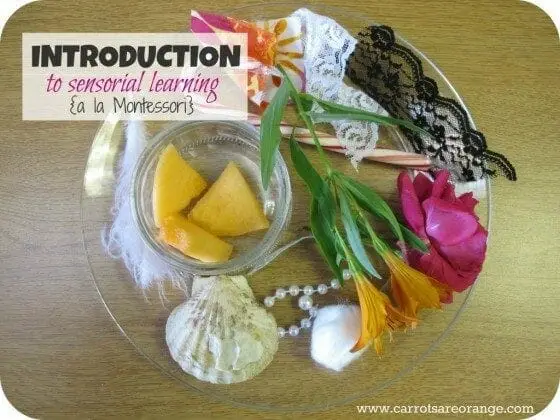
I love the introductory sensorial exercise the instructor had my class do on the first day. I thought I would share it with YOU but also suggest it as a wonderful activity for your child.
Materials:
- A plate
- Random objects from your home to explore with your senses
Approach:
- Call your child to the table or floor
- Introduce each item to him
- Explain that he should go ahead and explore the items. Taste the fruit, touch the cotton ball, smell the cloves, etc. you do the same.
- Ask him what he thinks about, what he feels, what he sees, etc when he experiences these items.
For us adults, we’ll be taken back to childhood vividly in many cases, at least for me. For the most part, too, the memories were warm and positive. For a child, if something is soft, for example, he might say, ‘a bunny rabbit’.
If anything, this experience will bring home Maria Montessori’s original thinking and this activity is only the beginning!
Montessori Sensorial Lesson Sequence
General Breakdown of Montessori Sensorial Works
- Visual – e.g. Broad Stair
- Auditory – e.g. Sound Cylinders
- Haptic – e.g. Rough & Smooth Boards, Thermic Bottles
- Olfactory & Gustatory – e.g. Smelling Bottles & Tasting Bottles
- Stereognostic – e.g. Mystery Bag
- Visual (Geometry) – e.g. Triangle Box
Detailed Breakdown of Montessori Sensorial Works
Visual Sense
The child learns how to visually discriminate differences between objects.
Auditory Sense
The child discriminates between different sounds.
- Sound Cylinders (this work is an easy Montessori DIY!)
Haptic Sense
The child learns through his sense of touch, learns to feel the difference in pressure or weight of different objects, and works to refine his sense of temperature.
- Rough & Smooth Boards (also an easy DIY)
- Rough & Smooth Touch Tablets
- Fabrics
- Thermic Bottles
- Thermic Tablets
- Baric Tablets
- Baric Cylinders
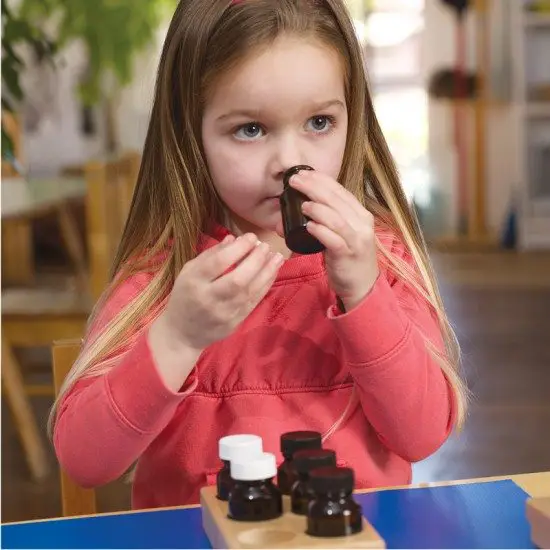
{Image Source: Montessori Services}
Olfactory & Gustatory Senses
The child is given a key to his smelling and tasting sense.
- Smelling Bottles (another easy Montessori DIY)
- Tasting Bottles
Stereognostic Sense
The child learns to feel objects and make recognitions based on what he feels.
“When the hand and arm are moved about an object, an impression of movement is added to that touch. Such an impression is attributed to a special, sixth sense, which is called a muscular sense, and which permits many impressions to be stored in a “muscular memory”, which recalls movements that have been made.” ~ Dr. Maria Montessori
- Mystery Bag
- Geometry Review
- Geometric Solids
- Geometric Solids with Bases

Visual Sense – Geometry
The child learns how to visually discriminate differences between geometric objects.
- Geometry Cabinet – Presentation Tray
- Geometry Cabinet – The Drawers
- Geometry Cabinet with Cards
- Constructive Triangles
- Triangle Box
- Rectangle Box
- Blue Box
- Large Hexagon Box
- Small Hexagon Box
- Pinwheel Box
- Binomial Cube
- Trinomial Cube
- Plastic Decanomial
Montessori Sensorial Resources
- Amazon offers loads of Montessori Sensorial materials at extremely reasonable prices
- Montessori Services provides ready-to-go Montessori Sensorial materials for your shelves



